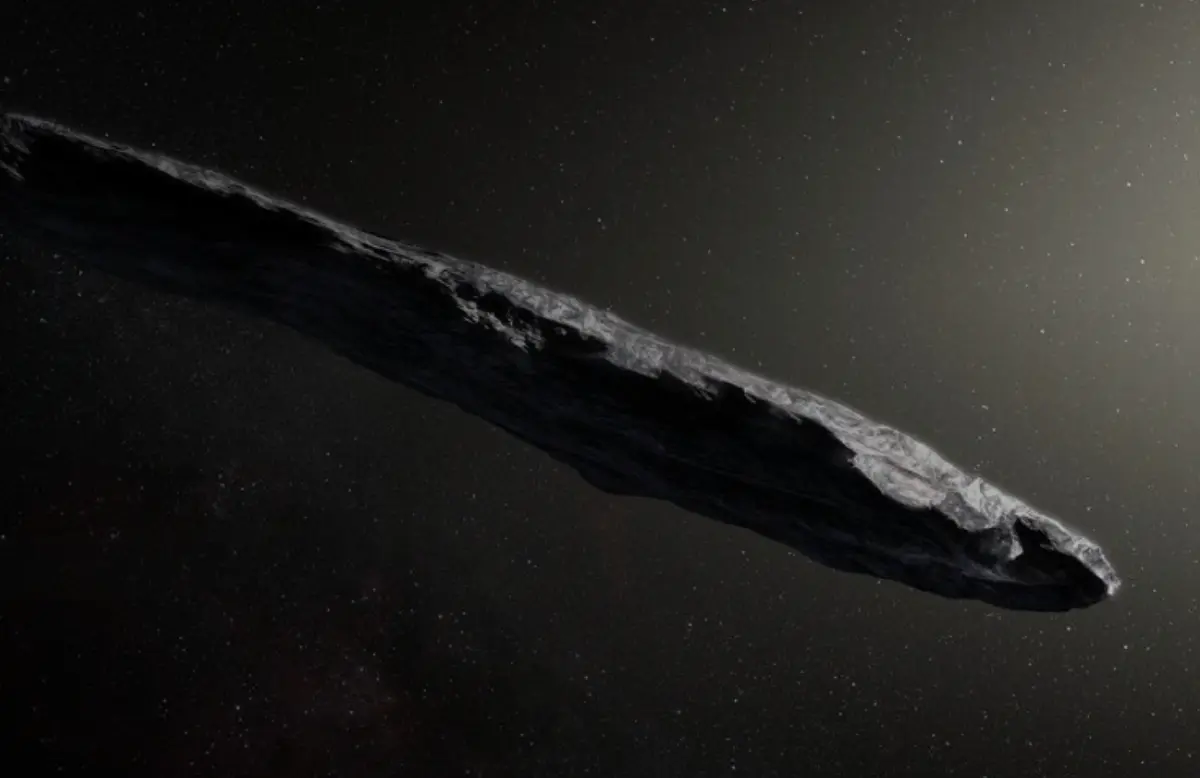Years before 3I/ATLAS, ʻOumuamua and 2I/Borisov lit the fuse on cosmic speculation: Where are they now?
-
 ‘Oumuamua (Image via NASA)
‘Oumuamua (Image via NASA)Over the past decade, three confirmed interstellar objects (ISOs) have passed through the Solar System: ʻOumuamua in 2017, 2I/Borisov in 2019 and 3I/ATLAS in July 2025, according to Universe Today.
Observations reported by NASA indicate that ʻOumuamua was a rocky, elongated object with a reddish surface, while 2I/Borisov and 3I/ATLAS are classified as comets exhibiting active outgassing during their approach to the Sun.
Each object followed a hyperbolic trajectory, entering and exiting the Solar System without being captured by the Sun’s gravity.
Current data from Universe Today and NASA indicate that all three ISOs are now moving back into interstellar space along paths determined by their respective velocities and trajectories.
Where ʻOumuamua, 2I/Borisov and 3I/ATLAS are now in Interstellar space
ʻOumuamua
ʻOumuamua was first detected on October 19, 2017, by the Pan-STARRS1 telescope in Hawaii, as reported by NASA. It measured approximately 400 meters in length and displayed a length-to-width ratio of around 10 to 1.
Observations by Karen Meech and her colleagues at the Institute for Astronomy in Hawaii did not find any dust or ice around the object, which led them to conclude that the object was inert when it was detected.
They also measured the object’s rotation period to be 7.3 hours and its brightness changed a lot because it was a long and thin object.
NASA trajectory calculations suggested that ʻOumuamua came into the Solar System from a direction close to the constellation Lyra, went to a place between the orbits of Mars and Jupiter and then headed to the constellation Pegasus.
The latest forecasts see the object as being outside Saturn’s orbit and still moving away from the Sun at about 38.3 kilometers per second.
2I/Borisov
According to the report by NASA, the amateur astronomer Gennady Borisov from Crimea discovered comet 2I/Borisov on August 30, 2019. The comet's nucleus is estimated to be a little less than one kilometer in diameter.
NASA's Hubble Space Telescope made the observations in late 2019 and early 2020. A gas and dust halo was observed enveloping the nucleus and it was also noted that a fragment had broken off the main body.
Its hyperbolic trajectory and a velocity of approximately 177,000 kilometers per hour relative to the Sun prevent capture by the Solar System.
2I/Borisov will go back to interstellar space. NASA's reports lead to the conclusion that the object is composed of ice and dust particles, but the surface features have not been imaged directly.
While the Sun's gravity alters the path slightly, it is not strong enough to hold the comet in the Solar System.
3I/ATLAS
The most recent ISO, 3I/ATLAS, was detected in July 2025, according to Universe Today. Observations confirm that it exhibits cometary activity, releasing water vapor as it approaches the Sun.
Trajectory analyses by Shokhruz Kakharov and Prof. Abraham Loeb at Harvard University indicate that 3I/ATLAS is the oldest among the three ISOs, with an estimated median age of 4.6 billion years, originating from the Milky Way’s thick disk.
Numerical simulations using the GalPot galactic potential model traced its path and confirmed an outbound trajectory that will carry it back into interstellar space after its Solar System passage.
Trajectory and future
Studies by Kakharov and Loeb integrated the trajectories of ʻOumuamua, 2I/Borisov and 3I/ATLAS over extended periods to determine their origin and age constraints, as reported by Universe Today.
ʻOumuamua likely originated from a thin disk stellar population approximately one billion years old. 2I/Borisov is approximately 1.7 billion years old, also from the thin disk, while 3I/ATLAS originated from an older stellar population in the thick disk.
All three objects are projected to continue leaving the Solar System, following hyperbolic paths influenced by their initial velocities and the Sun’s gravitational field. Current monitoring focuses on the outbound trajectories to refine models of interstellar object dynamics and stellar population origins.
Stay tuned for more updates.
TOPICS: 3I/ATLAS, 2I/Borisov, ʻOumuamua
- Physicist Avi Loeb proposes multi-front approach to the search for extraterrestrial life as 3I/ATLAS gains attention
- Juno’s possible link to 3I/Atlas sparks debate — did NASA miss a rare chance to study the interstellar visitor?
- Oberth Maneuver or natural flight path? 3I/ATLAS’s solar approach raises new questions
- 3I/Atlas reaches its closest point to the Sun today — here’s what to expect from the mysterious interstellar comet